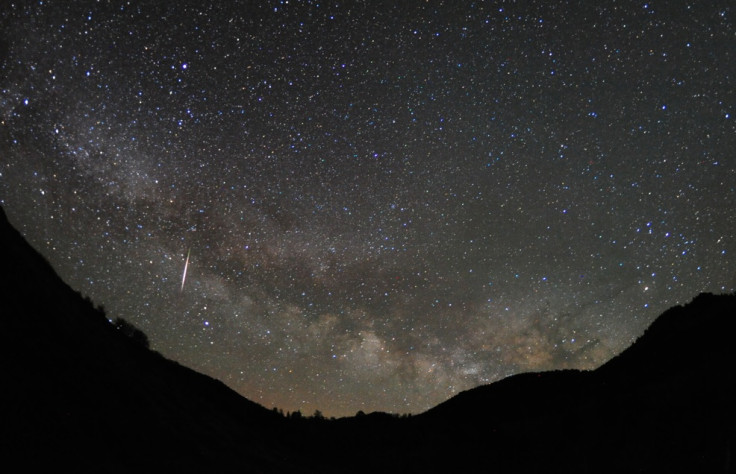Lyrids Meteor Shower 2014: Celestial Showers to Brighten April Skies

The annual Lyrids Meteor Shower has begun, with the celestial event seeing bright fireballs shooting through the sky from now until 25 April.
The meteor shower will peak on the 21and 22 April, at which point up to 20 meteors will fly across the sky every hour.
While the Lyrids normally lack long trails, they can produce very bright fireballs and according to meteorwatch.org, the Lyrids have been known to peak at 100 meteors per hour.
What are the Lyrids?
The Lyrids Meteor Shower is an annual display that happens around April. On the night of its peak people will be able to see bright flashes of light moving across a small area of sky, Dark Sky Telescope Hire reports. The brightest meteors will leave a train of fading light behind them that will be visible for several seconds.
The Lyrids result from Earth passing through the path of Comet C/1861 G1 Thatcher. The meteors are particles of dust shed by the comet. It is located in the constellation Lyra and the meteor shower has been observed for the past 2600 years – it is considered the oldest known meteor shower.
"Flakes of comet dust, most no bigger than grains of sand, strike Earth's atmosphere travelling 110,000 miles per hour and disintegrate as fast streaks of light," Nasa's Tony Phillips told Epoch Times. "A typical Lyrid shower produces 10 to 20 meteors per hour over the northern hemisphere, not an intense display. Occasionally, however, Earth passes through a dense region of the comet's tail and rates increase five to ten-fold," he added.
When and where to watch the Lyrids
According to EarthSky, the constellation Lyra rises in the northeast at about 10pm throughout April evenings. Exact timings are difficult to predict, but the meteor shower should be visible throughout the night and before dawn on the 22April.
No special equipment is required to watch the meteor shower – a dark open space and a clear night are necessary, however. EarthSky suggests lying down comfortably and looking upwards: "Although the moonlight is likely to wash out some Lyrid meteors in 2014, a portion of these Lyrid meteors should be bright enough to overcome the moonlit glare.
"Another beautiful feature of the Lyrids to watch for ... about one quarter of these swift meteors exhibit persistent trains – that is, ionized gas trails that glow for a few seconds after the meteor has passed."
For people in the UK looking to find areas to watch the meteor shower, details can be found at Dark Sky Discovery.
When is the next meteor shower?
The next meteor shower will be the Eta Aquarids, which take place shortly after the Lyrids. The meteor shower, from the constellation Aquarius, will peak on 5 May, but are better observed from the Southern Hemisphere. In the north, stargazers can expect to see between 10 and 20 meteorites per hour just before sunshine.
© Copyright IBTimes 2025. All rights reserved.




















